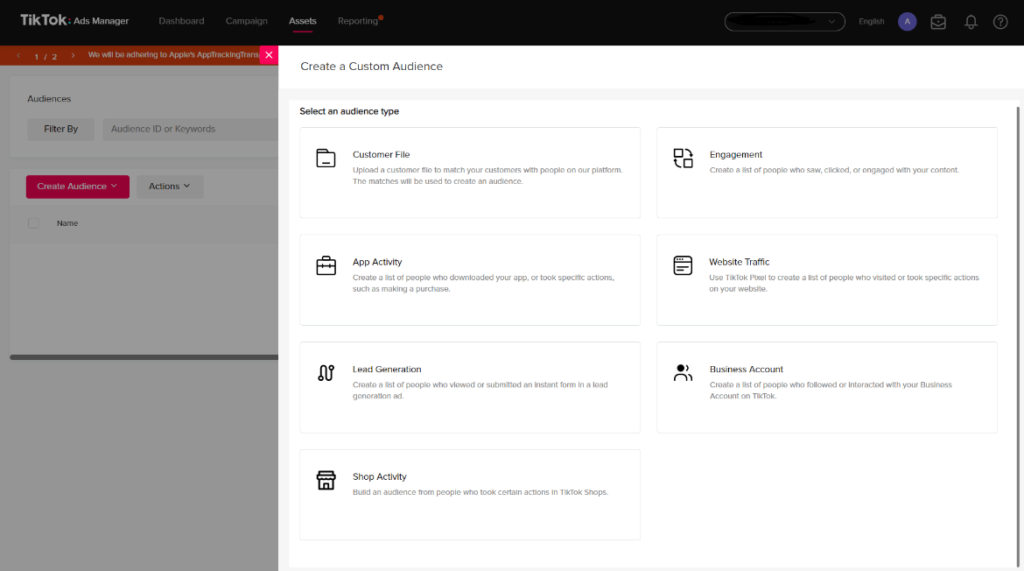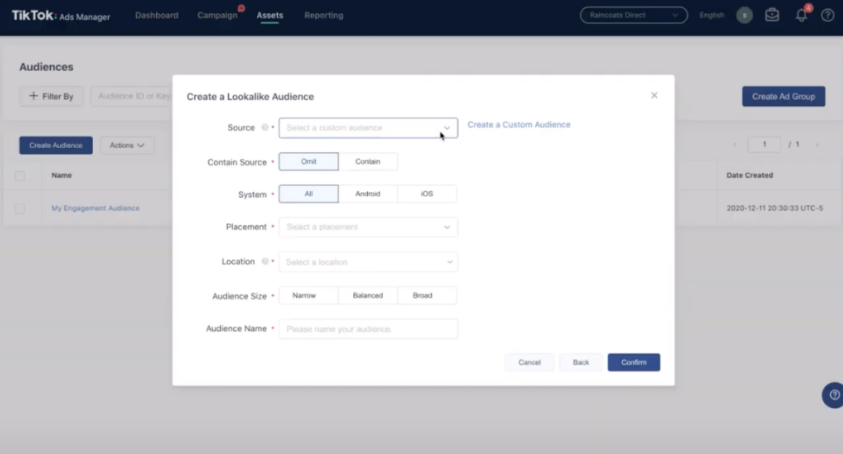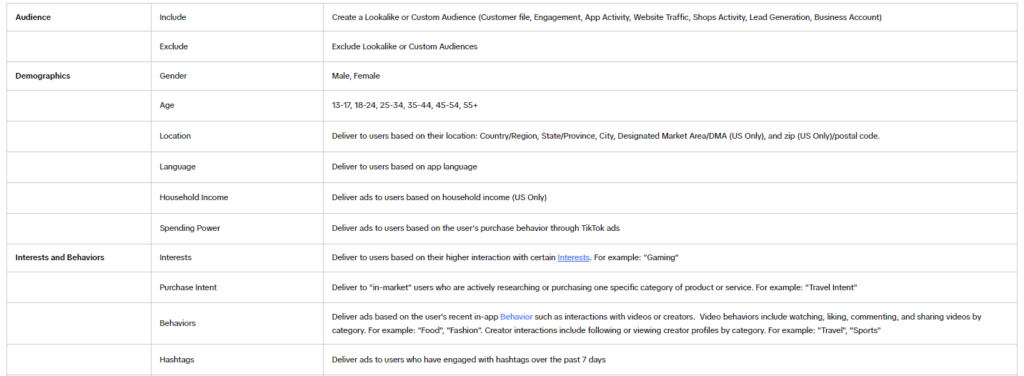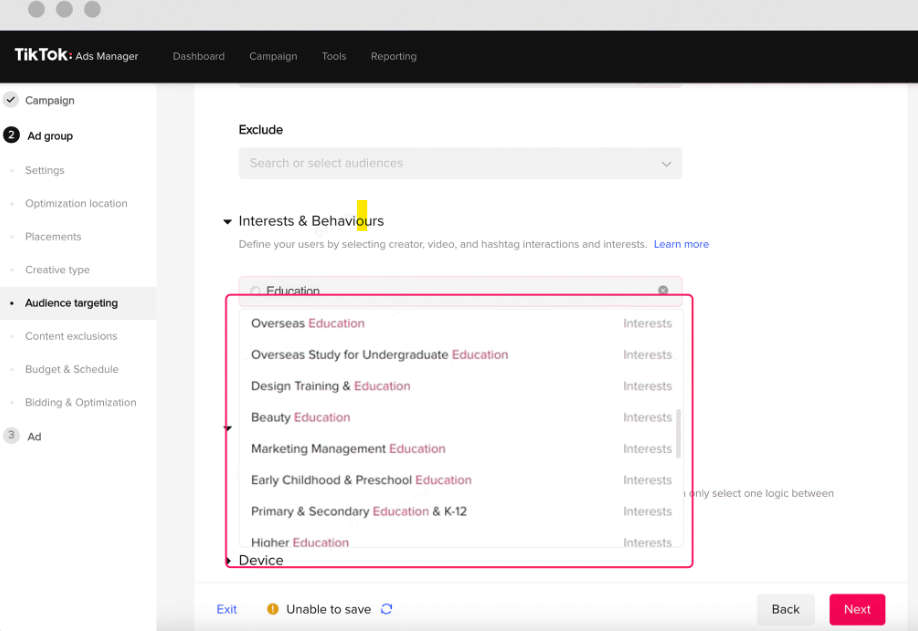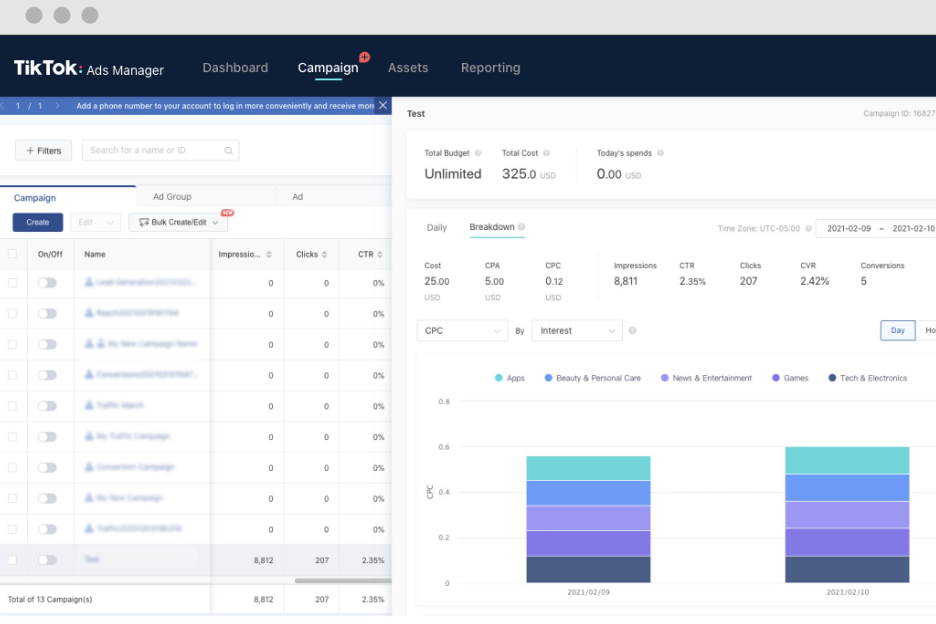When it comes to advertising on social media, TikTok offers an extensive array of ways to divvy up your target audiences and show the most relevant users what you can offer them.
With this variety of targeting options, the foundation is TikTok’s multiple audience-creation types:
- Lookalike
- Ad targeting
- Custom
Here’s a look at each. We’ll start with custom:
Custom audiences
Image Source: netscale.com
Custom audiences on TikTok are exactly what they sound like and operate pretty much the same as custom audiences elsewhere.
You can create a custom audience in TikTok based on:
- An existing customer list
- Engagement
- App activity
- Site traffic
- Users who have previously engaged with your lead-generation ads
Furthermore, TikTok business accounts are able to retarget to an organic audience based on whether a user:
- Followed you
- Visited your profile
- Viewed your video
- Or engaged in a particular way with your video — liking, sharing, or commenting
As you’re creating your TikTok custom audience and adding new parameters and characteristics, you’ll see an “available audience” size estimator within the campaign creation. This will show you the estimated audience available, which will start at a minimum of 1,000 people.
Reducing the range of characteristics you want your audience to have, will give you a larger available audience, but they naturally won’t have as many defining qualities that might signal they’re more likely to be receptive to your ads.
Lookalike audiences
Image Source: leadsbridge.com
Once you’ve established a custom audience, you can, from there, create a TikTok lookalike audience. This audience classification targets users that are deemed to be similar to your custom audience based on what TikTok can deduce about their characteristics, ranging from smaller, more similar audiences to broader, less similar ones.
In order to determine what a “similar” user is, TikTok looks at demographics, interests and behaviors, location, operating systems, and other details. From there, there are three audience sizes you can target depending on your goals, although the minimum size of original audience is 100 people. These are:
- Narrow
- Balanced
- Broad
These are pretty much self-explanatory, but really it’s just the narrower the lookalike, the more similar to your custom audience they are at the expense of the amount of people who will be served. The broader the audience, the more people will be served at the expense of similarity. It’s a tradeoff between relevance and reach — whichever lookalike audience size is “best” depends on your goals and other details.
Ad targeting
Image Source: ads.tiktok.com
Lastly is ad targeting, which TikTok has many dimensions for. These include targeting based on audiences, demographics, interests and behaviors, and devices.
Audience dimensions on TikTok allow you to include or exclude a custom or lookalike audience. Simple as that!
Demographic targeting on TikTok is pretty standard with other demographic advertising, where you can target based on:
- Gender
- Age range: 13-17, 18-24, 25-34, 35-44,45-54, and 55+
- Location: Region or country, state or province, city, designated market area, and postal code
- App language setting
- Household income (US only)
- Spending power based on users’ past TikTok ad purchasing behavior
Then there are interest or behavior dimensions on TikTok, as well. They include:
- Interests: What have users interacted with on TikTok and what interests do those signal? For example, “education” or “____”
- Purchase intent: Is this user actively searching and/or purchasing from a specific product category?
- Behavior: What has been the user’s recent app activity? This includes liking, sharing, commenting, and watching certain videos or creators.
- Hashtags: What hashtags have a user engaged with in the last week?
Crucially, all but the first of these are unique to TikTok.
Image Source: ads.tiktok.com
Device dimensions can be based on the operating system — iOS or Android — device model, and then, all unique to TikTok, connection type, operating system version, device price, carrier, and internet service provider.
You also have smart targeting with TikTok, which aims to use different automations to increase your ads’ performance, namely by reducing the cost per acquisition and increasing the general effectiveness elsewhere.
Smart interest and behavior, or smart audience advertising, purports to be able to expand your target to reach a larger audience without sacrificing the likelihood to convert. The tradeoff, of course, is that you’re giving over a certain amount of decision-making to the machine instead of being able to make those calls yourself. TikTok can also recommend certain interests and behaviors to target if its data suggests that would be relevant to your campaign.
Image Source: ads.tiktok.com
And there you have your TikTok audience choices. It starts with a few options, and from those categories, you have different specifications that can be applied to find the most specifically-relevant audiences who are most likely to be interested in what you have to offer.


